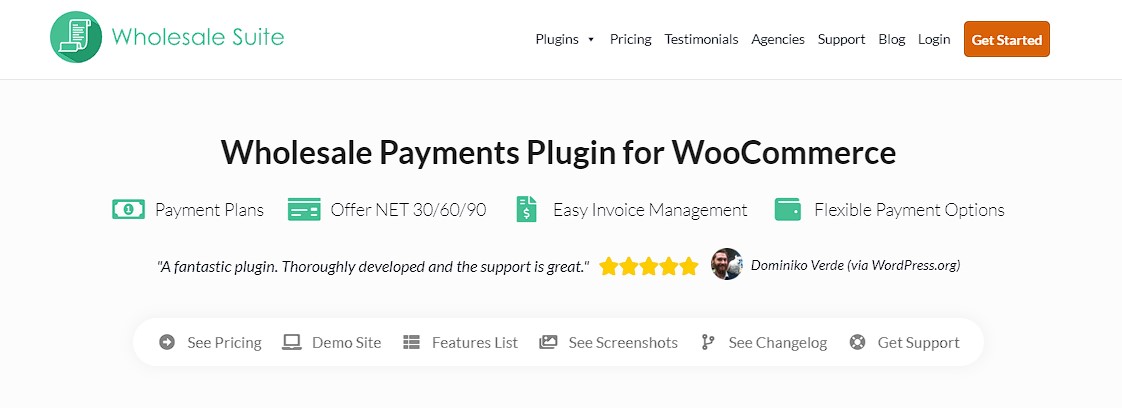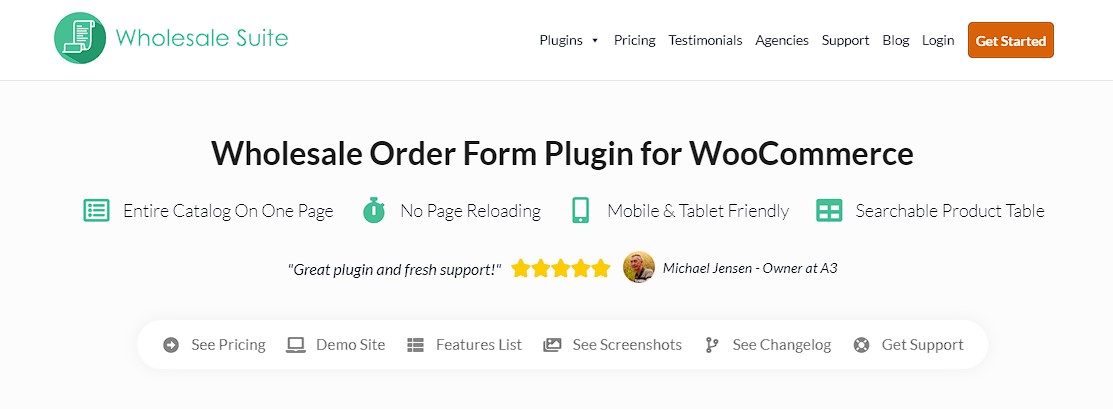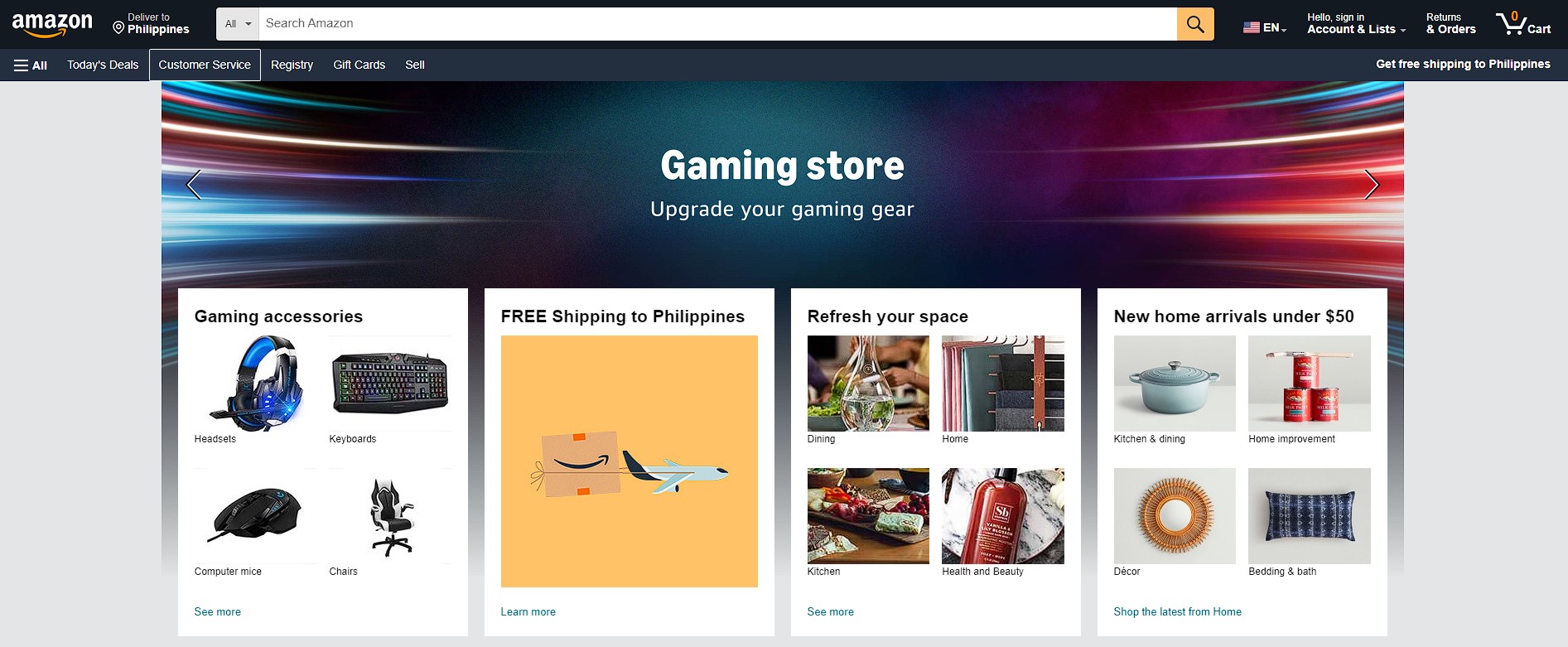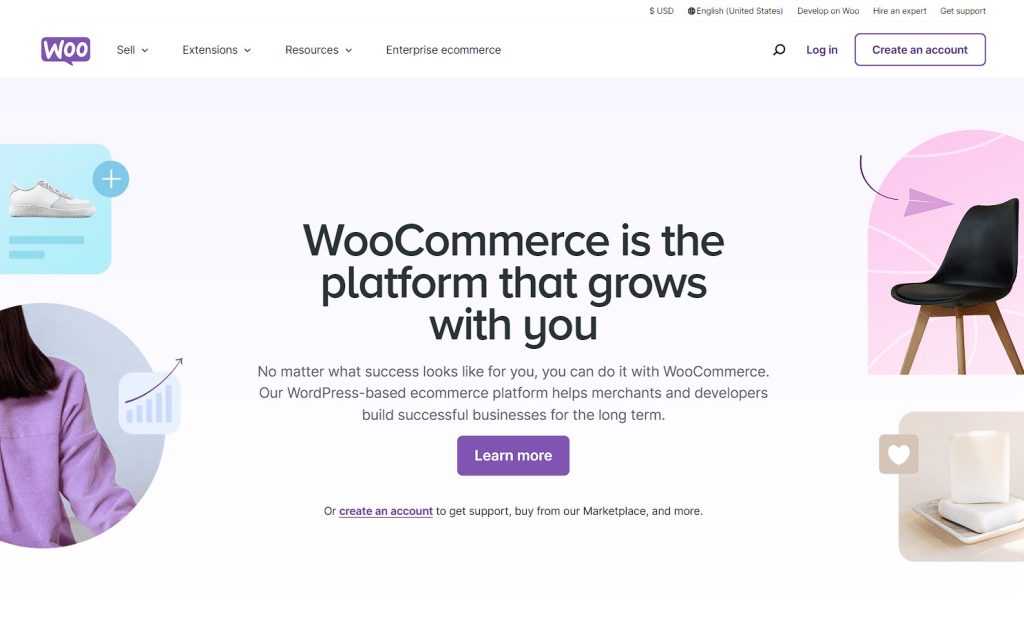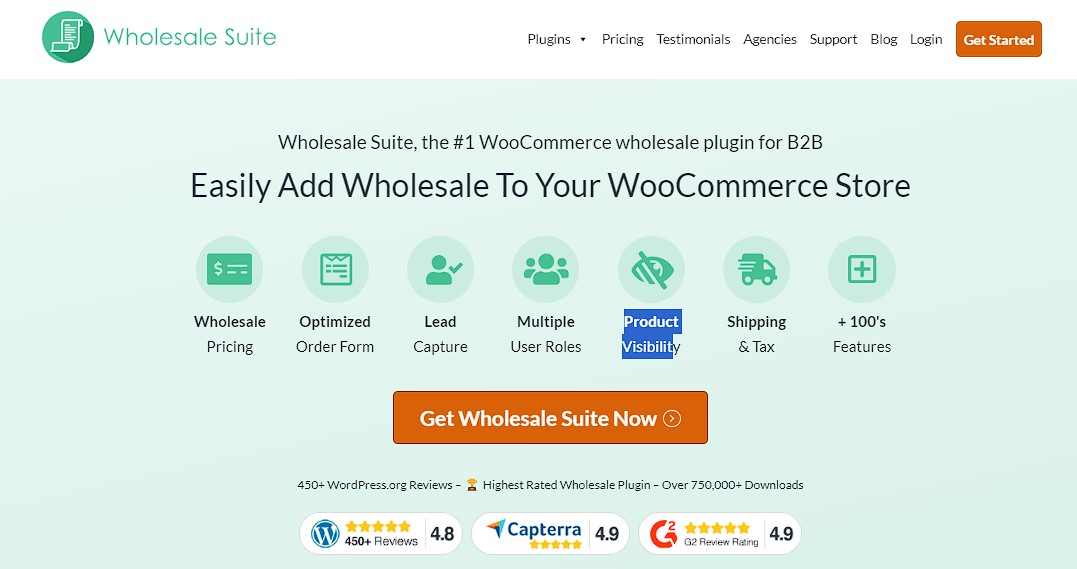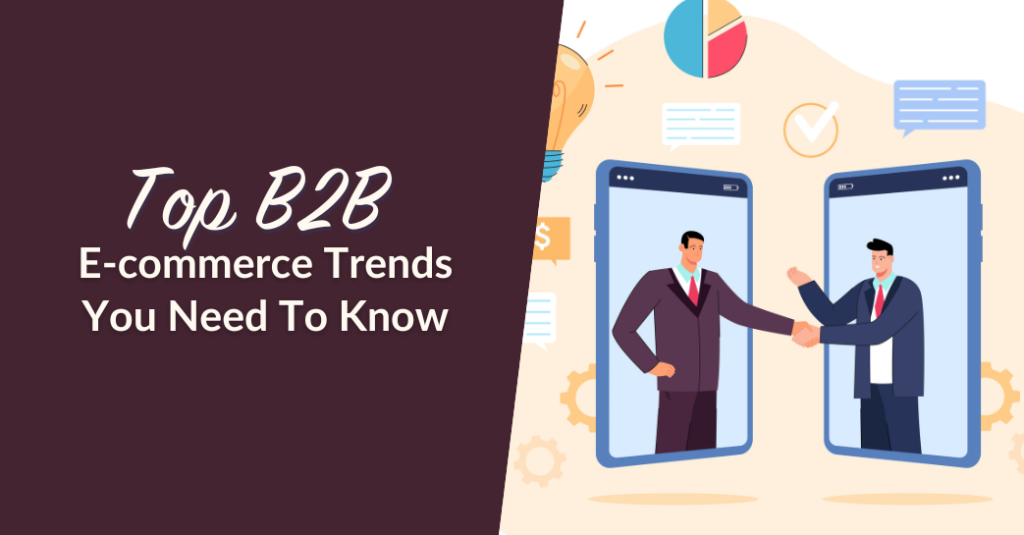
When planning your business goals this year, B2B leaders should pay attention to the key trends in B2B e-commerce. Additionally, it’s important to understand these B2B e-commerce trends and think about how they can benefit your business.
In this article, we will explore the important B2B e-commerce trends that are expected to shape your business. We’ll break down what these trends mean, why they matter, and how you can use them to your advantage.
By understanding these developments, you can make informed decisions that will help your business grow and stay ahead of the competition in the coming years.
B2B E-commerce Trends In Previous Years
According to Digital Commerce 360, online sales on B2B e-commerce sites, portals, and marketplaces grew by 17.8% to $1.63 trillion in 2021.
By 2022, according to McKinsey & Company, 65% of B2B companies are fully transacting online, with e-commerce generating 18% of their revenue, outpacing phone, email, and video sales.
This aligns with Wonderman Thompson data which reveals that 49% of B2B buying in the UK, US, and China now happens online.
To succeed in B2B e-commerce, a basic website and average customer experience aren’t enough anymore. Companies need to offer a seamless and user-friendly online experience to stand out and capture more sales.
What Are The B2B Trends For E-commerce In The Present?
As B2B buyers get better with technology, they push sellers to update their sales methods or risk falling behind.
In this article, we’ll look at the latest and most important B2B ecommerce trends to watch and how they can help you shape your e-commerce strategy.
Trend 1: Automation
Making things simpler in the B2B market is important for companies. Automation helps sales and customer service teams save time on repetitive tasks and lets them focus on connecting with customers and making sales.
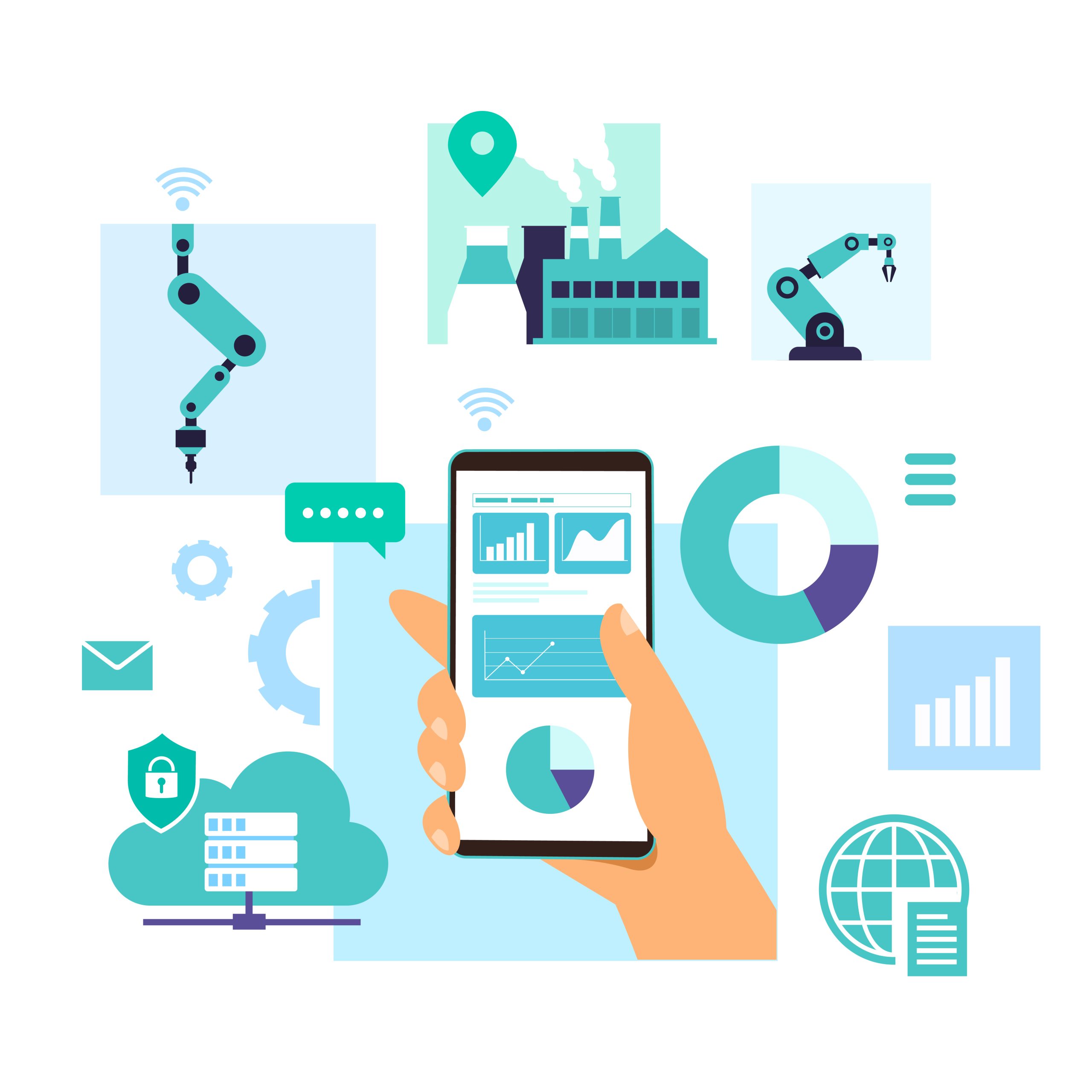
This can improve every part of your B2B e-commerce, including:
1. Real-time inventory visibility
This tracks stock levels instantly, sends low-stock alerts, and reduces manual data entry.
2. Fulfillment and order processing
These provide real-time order updates, automate packing and shipping, and prevent canceled orders from being processed.
3. Customer service
It offers order updates and delivery confirmations via SMS or email, directs customers to the right support, and helps them find answers.
4. Order management
This routes orders to the best fulfillment center, provides automatic quotes, and updates customer profiles with order history and preferences.
Trend 2: Payment flexibility and options
B2B buyers now want flexibility in how they pay for their purchases, just as they do in how they shop. B2B transactions vary in size, frequency, and complexity. Offering multiple payment options lets buyers choose what best fits their financial needs.
Providing various payment methods makes buying easier and faster for B2B customers. For example, a company might offer:
- Invoicing: Buyers can pay later, which helps with cash flow.
- Purchase orders: Buyers can place orders and pay through their internal purchasing system.
- Credit lines: Buyers can spread out payments over time, which can ease budgeting.
- Online payments: Quick and easy for smaller or one-time purchases.
One tool that facilitates this level of flexibility is the Wholesale Suite – Wholesale Payments plugin. This plugin allows businesses to offer multiple payment options tailored for wholesale customers. By integrating solutions like Wholesale Suite, companies can provide a seamless and efficient payment experience, encouraging more B2B customers to explore digital purchasing solutions.
These options make buying easier and faster for B2B customers and encourage companies to explore digital solutions that offer these choices.
Trend 3: Recurring orders
In B2B e-commerce trends, recurring orders show that customers are satisfied and help sellers earn a steady income. These orders often include office supplies, inventory, or services that customers need regularly.
These give sellers reliable income, build customer loyalty, and increase the value of each customer over time. To manage this, you’ll need a system that handles repeat orders and offers discounts for returning customers.
The Wholesale Suite – Wholesale Order Form plugin is an excellent solution for this. It simplifies the ordering process for customers, allowing them to quickly place recurring orders with ease. This plugin also supports features like bulk discounts, making it easier to reward returning customers and encourage consistent purchasing behavior.
Trend 4: Generative AI
Generative AI or simply Artificial Intelligence is becoming a helpful tool for making processes better and more efficient. It uses machine learning to look at how your business works, find problems, and suggest fixes that can be done with just a click.

According to a report from McKinsey, they found 63 ways to use generative AI in 16 different business areas. These uses could bring in between $2.6 trillion and $4.4 trillion in economic benefits each year across different industries.
However, only a few businesses are seeing the benefits. According to Forrester, only about a quarter of businesses will get a return on investment (ROI) from GenAI technology in 2024.
When used the right way, a generative AI platform can offer many benefits, including:
1. Matching content to the business and buyer
AI helps produce creative content on website that looks and sounds like the business while also fitting what the buyer likes. This helps make the product pages more appealing.
2. Finding the best customers quickly
This helps the sales team find the right customers faster. This means they can succeed more often and make more sales.
3. Reducing mistakes with automation
Automated tasks help avoid mistakes and save time. This gives more time to focus on bigger, more important decisions.
4. Understanding trends and competitors
GenAI can use real-time data to learn about trends, competitors, and prices. This helps the business make better choices.
5. Improving customer support with smart tools
Smart chatbots and virtual assistants provided by GenAI can help improve customer support and sales. This helps meet customer needs more effectively. The best part is that adding AI to your website is now easier than ever with integrated tools that do the heavy lifting for you.
Trend 5: B2B marketplaces
A B2B marketplace strategy can work alongside traditional sales methods by allowing customers to place orders online using a platform they trust.
For example, Amazon, the top marketplace for businesses in 2021, lets companies sell both products and services. B2B sellers use other eCommerce sites to reach more customers, check competitors, and make shopping easier on places like Amazon.
At the same time, B2B sellers are adjusting their selling strategies for marketplaces by:
1. Connecting marketplace to business systems
B2B sellers connect their marketplace accounts with their business systems, like inventory, shipping, and customer service. This helps them manage everything in one place, making it easier to keep track of products, orders, and customer needs.
2. Learning and planning with marketplace tools
Sellers use special tools from the marketplace to understand their sales better. These tools help them see what’s working and what’s not, so they can make better plans to sell more products.
3. Reaching more customers on multiple marketplaces
By selling on different marketplaces, B2B sellers can reach more customers. The more places they sell, the more people can find and buy their products.
4. Adding extra value for customers
Sellers add extra value by bundling products and services together. Additionally, they also expand to new areas and create special offers that fit what different customers want. This helps attract more buyers and keeps them happy.
If you want to learn more about this, read our article: The Ultimate B2B ECommerce Strategy Guide For Marketplace Owners.
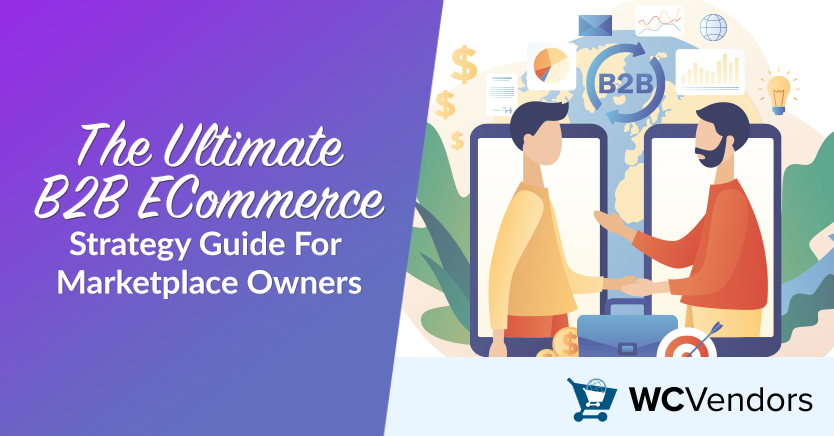
Trend 6: B2C experiences for B2B buyers
In 2021, Gartner reported that 50% of Chief Sales Officers planned to shift from leading sellers to leading the process of selling by 2025. Sellers now need to provide e-commerce experiences similar to what you find in B2C shopping.
A good e-commerce experience has clear pricing and real-time inventory updates. It also includes honest sales and content made for different buying stages and customer needs.
Many B2B buyers are used to customer-first shopping like on Amazon. They expect quick orders, easy returns, and perks like daily deals.
To make this happen, a B2B platform needs features like product filtering and strong search options. It also needs order management that can grow and connect with different shopping channels.
Trend 7: Invest in e-commerce platform technology
If you’re planning to move your business online, a good place to start is with your B2B e-commerce platform. This platform can be the center of everything you do online.
For example, WooCommerce is a very flexible platform that lets you customize your online store to match what your business needs.
With WooCommerce, you can add different plugins and tools, like payment options and product filters, to make your store work better.
This is well-suited for plugins like Wholesale Suite, which support essential B2B features to enhance the wholesale shopping experience. With Wholesale Suite, businesses can offer special pricing tailored to different customer groups, which allows them to set unique pricing for specific buyers, such as regular customers, or wholesale buyers.
With a host of features, this plugin provides the backbone for seamless B2B transactions such as:
- Wholesale pricing: Wholesale Suite allows businesses to set custom pricing for different customer groups based on order size or type.
- Lead capture and segmentation: It helps convert visitors into customers with B2B forms, assigning unique pricing to retail and wholesale buyers.
- Bulk order forms: The plugin simplifies large orders with easy-to-use, one-page bulk order forms.
- Discounts and tiered pricing: Wholesale Suite offers discounts and lower prices for larger orders through tiered pricing.
- Flexible pricing strategies: It provides options like minimum orders, product visibility controls, and custom payment terms.
Read more about the ways to enhance your WooCommerce B2B Experience if you want to learn how wholesale e-commerce can be tailored to your business needs.
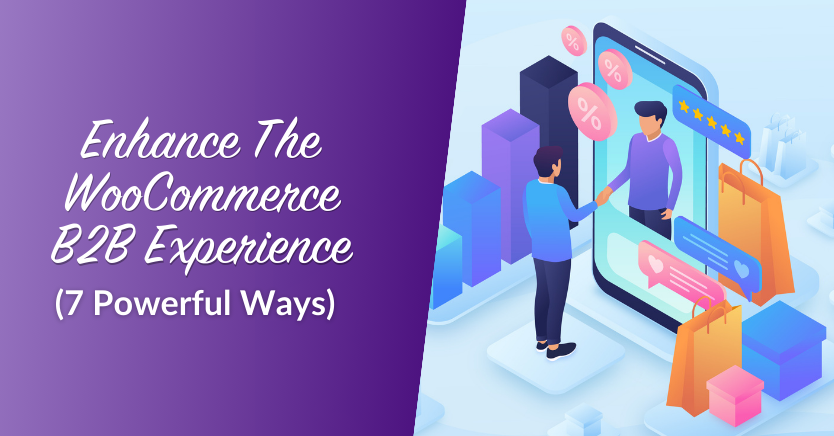
Succeeding Plans For B2B E-commerce Trends
New trends in B2B e-commerce, like fast delivery and easy shopping, are driving businesses to upgrade their technology. Smart AI tools are also becoming more popular.
These new technologies help businesses grow and stay flexible. They allow quick updates to online stores and sales methods.
Even though we can’t predict future trends, the best way to prepare for is to have a flexible e-commerce system that can change easily without causing problems.
In the end, your success in B2B e-commerce depends on how well you meet your customers’ needs. Know what your customers want and use the right tools. With that, you’ll be ready for big e-commerce changes in the years beyond.
FAQs About B2B Ecommerce Trends
Which is the current trend in B2B eCommerce?
Right now, B2B e-commerce is focusing on making the buying process faster and easier. Businesses are focusing on fast delivery and making shopping easy across channels.
Another trend is using AI. This helps ecommerce businesses understand what customers want and offer better deals. All these trends aim to make the shopping experience smoother and more enjoyable for buyers.
What is the future of B2B e-commerce?
The future of B2B e-commerce will be all about being flexible and adapting to changes quickly. As customer needs and technology change, businesses must update their online stores. This helps them stay in the current trends.
This means having a system that can easily change when needed. It is like adding new features or able to fix problems fast. The goal is to make sure businesses can always meet customer demands and provide a great shopping experience.
What is the forecast for B2B eCommerce?
B2B e-commerce is expected to keep growing in the coming years. More businesses are investing in new technology to improve how they sell online. This includes making their websites better, using AI to understand customers, and offering more ways to buy products.
As more companies go digital, the B2B e-commerce market size will get bigger, with more sales happening online than ever before.
What is the future of B2B selling trends?
The future of B2B selling will likely involve more automation, where machines do some of the work to make things faster. Personalization will also be important, as businesses try to offer products and services that match what each buyer wants.
AI will play a big role in this by helping sellers understand customer needs and improving the overall buying process. The focus will be on making sales more efficient and giving customers a better personalized experience.
Conclusion
This 2024 and beyond, the focus of B2B e-commerce trends will be on improving the online experience to meet changing buyer needs.
B2B businesses should pay attention to trends, like upgrading old systems, investing in e-commerce technology, and trying new sales channels.
In this article, we tackled the top B2B e-commerce trends:
- Automation
- Payment flexibility and options
- Recurring orders
- Generative AI
- B2B marketplaces
- B2C experiences for B2B buyers
- Invest in e-commerce platform technology
While it might seem important to do everything at once, the real key to success is understanding your customers and creating a plan for your digital journey. Once you have that plan, it can guide you to success.
If there’s anything else you would like to know more about this topic, you may comment in the section below!


